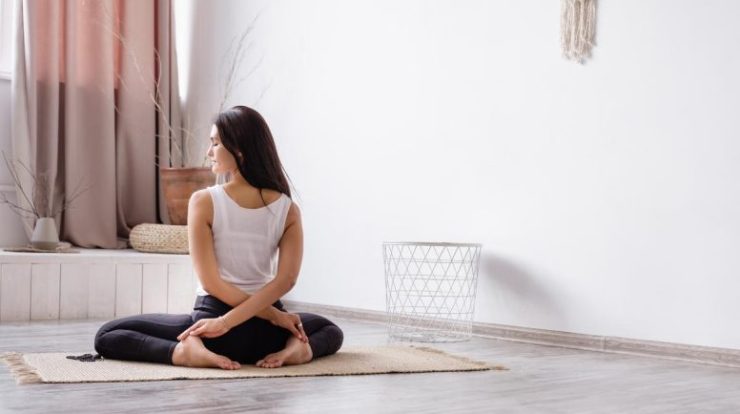
Do you want to strengthen your core and get into better shape? Yoga is a conscious and powerful method for building core strength and achieving overall physical stability. This essay delves into a recommended core power awakening routine. This practice includes a range of postures and motions designed to strengthen and stretch the abdominal muscles while also improving balance and mobility.
1. Introduction: The Importance of Core Strength
Core strength plays a fundamental role in our overall well-being and physical performance. The abdominals, obliques, and lower back muscles all work together to keep your spine, pelvis, and hips in place. Improving your core strength can help you avoid injuries and improve your posture, balance, and sports performance.
2. Getting to the Heart of It:Method
With an emphasis on the mind-body connection, provides a comprehensive strategy for abdominal muscle development. Regimen helps people gain insight into their bodies and tap into their inner strength by increasing awareness and stimulating core muscles.
3. The Core Power Wake-Up Routine
3.1 On a Tabletop
All fours, with hands under shoulders and knees under hips, is the starting posture for this exercise. Pull your belly button in toward your spine to activate your abdominal muscles. The deep abdominal muscles are engaged and the spine is stabilized when in this position.
3.2 Leg Rotations in a Semicircle
From the tabletop posture, with your hips still level, extend one leg straight back behind you. Perform a series of tiny, semicircular leg motions while keeping your core engaged. Switch legs and do it again. The hip stabilizers and lower abs get a workout with this one.
3.3 Plank Pose
The plank stance is achieved by extending the legs straight back and balancing on the toes and hands, which is the transition from the tabletop position. Keep your body in a rigid, vertical line, from your head to your heels. By holding this position for a few breaths, you may strengthen your abs, back, and shoulders.
3.4 Reverse Hip Dips
From the plank position, roll your hips to one side and lower them to the floor as you move your weight to one hand. Come back to square one and try it from the opposite side. Stability and balance can be enhanced by working the obliques with this exercise.
3.5 Cobra Pose
Place your hands beneath your shoulders and lay face up. Keep your lower body firmly planted on the ground as you press your palms into the floor and lift your chest into an arch. The cobra position helps you achieve a strong and flexible core by stretching your abdominal muscles and working your back.
4. Breath Awareness: Deepening the Practice
Promotes slow, deep breathing all through the core power wake-up practice. Conscious, deep breathing aids oxygenation, calms the nervous system, and strengthens the link between the brain and the rest of the body. Pay attention to filling your lungs completely with air through the nose, expanding your belly, and releasing all that air through the mouth.
5. Modifying the Routine: Options for Different Fitness Levels
Recognizes that everyone has a unique fitness and flexibility profile. As a result, they include alternative forms of each core power wake-up exercise. Core strength can be developed at your own pace, whether you’re just starting out or are an experienced practitioner.
6. A Mindful and Balanced Approach to Core Strengthening
A conscious and well-rounded approach to core strength is encouraged in YogablogFit’s core power wake-up practice. You may strengthen your sense of well-being and personal power by centering yourself, taking deep breaths, and actively engaging your body and mind. This program will help you build a strong core and improve your health in general.
7. Conclusion
Strengthening the abdominal muscles is essential for a well-rounded physical fitness routine. The core power wake-up practice is designed to strengthen the entire body from the inside out, with an emphasis on the mind-body connection and the benefits of stability, balance, and flexibility. The transforming effects of a strong core can be yours when you include this program in your training routine.
Frequently Asked Questions (FAQs)
Q: How often should I practice the core power wake-up routine?
A: It is recommended to practice the routine at least three times a week to see noticeable improvements in core strength.
Q: Can I practice the routine if I have a back injury?
A: If you have a back injury, it is essential to consult with a healthcare professional or a qualified yoga instructor before attempting the routine. They can provide modifications and guidance based on your specific condition.
Q: Is the core power wake-up routine suitable for beginners?
A: Yes, the routine offers modifications and variations for different fitness levels, including beginners. Start with the modifications and gradually increase the intensity as you build strength and confidence.
Q: How long does the routine take to complete?
A: The duration of the routine depends on your pace and the number of repetitions. On average, it takes approximately 15-20 minutes to complete the full routine.
Q: Can I combine the core power wake-up routine with other workouts?
A: Yes, you can integrate the routine with other workouts or yoga practices. It complements various fitness regimens and can be a valuable addition to your overall fitness routine.
You may improve your abs and your mind with the help of the Core Power Wake-Up Program. You can strengthen your core, improve your general fitness, and get the life-altering benefits of yoga by adopting this practice into your daily life. Get going right now on the path to developing an iron will!






